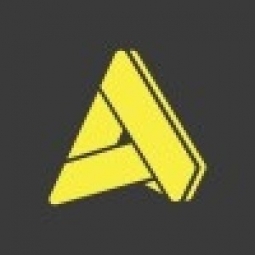Technology Category
- Functional Applications - Enterprise Resource Planning Systems (ERP)
- Platform as a Service (PaaS) - Application Development Platforms
Applicable Industries
- Food & Beverage
Services
- System Integration
About The Customer
Dun Yong Food Services is a catering and wholesale supplier that specializes in Asian foods. The company is continuously growing and has ambitious plans for the future. Recognizing the need for a modern, scalable ERP system to support their growth, Dun Yong embarked on a search for a new software partner. The company values transparency and honesty in their partnerships and involves key users from their teams in important decision-making processes. Dun Yong is currently looking for a larger business space to accommodate their growth and with the implementation of the Aptean Food & Beverage ERP Foodware Edition, they are well-prepared for future expansion.
The Challenge
Dun Yong Food Services, a catering and wholesale supplier specializing in Asian foods, was faced with the challenge of an outdated ERP solution that no longer met the requirements of their growing business. The existing system offered limited opportunities for improvement and was not able to fully support the company's future plans. Recognizing the importance of change management in implementing a new system, Dun Yong began the search for a modern, scalable ERP platform about a year and a half ago. The company involved key users from their teams from the beginning and created a list of minimum requirements that a potential software partner had to meet. However, the project had to be put on hold due to the uncertainties brought about by the COVID-19 pandemic.
The Solution
After an intensive selection process, Dun Yong chose Aptean Food & Beverage ERP Foodware Edition as their new software partner. This decision was based on several critical factors. During the selection process, all key users attended the demonstrations, and Aptean’s team was able to answer all of their most pressing questions. Aptean also demonstrated a deep understanding of Dun Yong's unique challenges and needs, which helped to build trust. The Aptean Food & Beverage ERP solution was found to be the best fit for the growing company due to its ease of use and fully integrated Microsoft environment. With this new ERP system, Dun Yong is now prepared for future growth and expansion, including plans to expand further in Belgium.
Operational Impact

Case Study missing?
Start adding your own!
Register with your work email and create a new case study profile for your business.
Related Case Studies.

Case Study
The Kellogg Company
Kellogg keeps a close eye on its trade spend, analyzing large volumes of data and running complex simulations to predict which promotional activities will be the most effective. Kellogg needed to decrease the trade spend but its traditional relational database on premises could not keep up with the pace of demand.

Case Study
HEINEKEN Uses the Cloud to Reach 10.5 Million Consumers
For 2012 campaign, the Bond promotion, it planned to launch the campaign at the same time everywhere on the planet. That created unprecedented challenges for HEINEKEN—nowhere more so than in its technology operation. The primary digital content for the campaign was a 100-megabyte movie that had to play flawlessly for millions of viewers worldwide. After all, Bond never fails. No one was going to tolerate a technology failure that might bruise his brand.Previously, HEINEKEN had supported digital media at its outsourced datacenter. But that datacenter lacked the computing resources HEINEKEN needed, and building them—especially to support peak traffic that would total millions of simultaneous hits—would have been both time-consuming and expensive. Nor would it have provided the geographic reach that HEINEKEN needed to minimize latency worldwide.

Case Study
Energy Management System at Sugar Industry
The company wanted to use the information from the system to claim under the renewable energy certificate scheme. The benefit to the company under the renewable energy certificates is Rs 75 million a year. To enable the above, an end-to-end solution for load monitoring, consumption monitoring, online data monitoring, automatic meter data acquisition which can be exported to SAP and other applications is required.

Case Study
Coca Cola Swaziland Conco Case Study
Coco Cola Swaziland, South Africa would like to find a solution that would enable the following results: - Reduce energy consumption by 20% in one year. - Formulate a series of strategic initiatives that would enlist the commitment of corporate management and create employee awareness while helping meet departmental targets and investing in tools that assist with energy management. - Formulate a series of tactical initiatives that would optimize energy usage on the shop floor. These would include charging forklifts and running cold rooms only during off-peak periods, running the dust extractors only during working hours and basing lights and air-conditioning on someone’s presence. - Increase visibility into the factory and other processes. - Enable limited, non-intrusive control functions for certain processes.

Case Study
Temperature Monitoring for Restaurant Food Storage
When it came to implementing a solution, Mr. Nesbitt had an idea of what functionality that he wanted. Although not mandated by Health Canada, Mr. Nesbitt wanted to ensure quality control issues met the highest possible standards as part of his commitment to top-of-class food services. This wish list included an easy-to use temperature-monitoring system that could provide a visible display of the temperatures of all of his refrigerators and freezers, including historical information so that he could review the performance of his equipment. It also had to provide alert notification (but email alerts and SMS text message alerts) to alert key staff in the event that a cooling system was exceeding pre-set warning limits.

Case Study
Coca-Cola Refreshments, U.S.
Coca-Cola Refreshments owns and manages Coca-Cola branded refrigerators in retail establishments. Legacy systems were used to locate equipment information by logging onto multiple servers which took up to 8 hours to update information on 30-40 units. The company had no overall visibility into equipment status or maintenance history.



